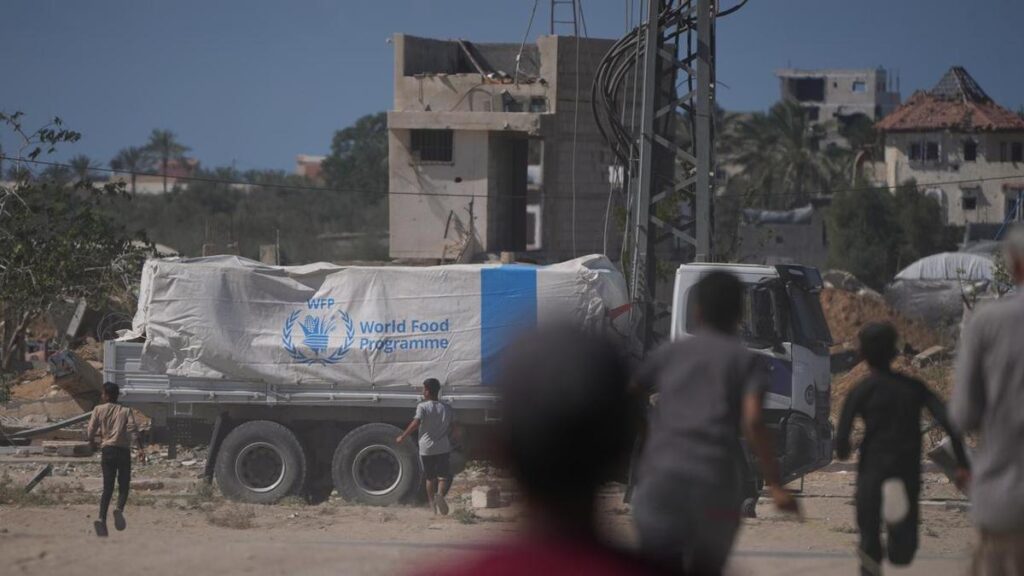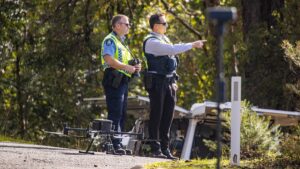
Aid trucks have begun entering the Gaza Strip as preparations intensify for the reopening of the Rafah crossing. This development comes against a backdrop of ongoing tensions regarding the return of deceased hostages, which has raised concerns about maintaining a fragile ceasefire. The ceasefire has halted two years of intense conflict in the region, resulting in the release of all living hostages held by Hamas.
Israeli authorities had previously threatened to keep the Rafah crossing closed and limit aid supplies due to what they described as a slow return of bodies by Hamas. The militant group, however, returned more Israeli bodies overnight, leading to a shift in Israeli plans. An Israeli security official confirmed on Wednesday that arrangements are being made to open Rafah for Gazan citizens, with an estimated 600 aid trucks expected to enter the enclave.
Hamas returned four bodies confirmed as deceased hostages on Monday and another four on Tuesday. Despite the exchange, Israeli officials indicated that one of the returned bodies did not belong to a hostage. The ongoing dispute over body returns poses a significant risk to the ceasefire, alongside unresolved broader issues. Israel has stated that future phases of the truce will require Hamas to disarm and relinquish control, a demand the group has thus far resisted.
Humanitarian Aid Flow and International Efforts
The return of aid trucks signals a crucial moment for humanitarian efforts in Gaza. Video footage from Reuters captured trucks crossing from the Egyptian side of the border into Rafah on the morning of October 25, 2023. Some of these trucks were reported to be carrying fuel and pallets of essential aid. While it remains to be seen if this convoy will fully cross into Gaza as part of the 600 trucks required daily under the ceasefire agreement, other crossings have also facilitated aid deliveries.
The Rafah crossing is anticipated to open for the movement of people on Thursday, with a European Union mission deployed to oversee the process. The Palestinian Authority, which governs the Israeli-occupied West Bank, is preparing to manage the crossing. Yet, reports indicate that some Palestinians awaiting medical treatment have yet to receive notification regarding their travel.
Israeli public broadcaster Kan reported that the aid deliveries set for Wednesday will include food, medical supplies, fuel, cooking gas, and equipment needed to repair vital infrastructure. A representative from the World Food Programme noted that their trucks were able to enter Gaza for the first time in two days, although the situation remains unpredictable. “Our trucks crossed into Gaza, but it’s still early days in the ceasefire, and the situation remains unpredictable,” said WFP spokeswoman Abeer Etefa.
Security Crackdown and Ongoing Violence
In parallel with humanitarian developments, tensions within Gaza continue to rise. Several Palestinian factions have supported Hamas’s security measures, which include actions against local clans they label as “hubs of crime.” The Popular Front for the Liberation of Palestine is among the groups backing Hamas’s crackdown, which has involved public executions of individuals accused of collaborating with Israel.
The US military’s Middle East command has called on Hamas to cease violence against innocent Palestinian civilians and to disarm without delay. Palestinian Authority chairman Mahmoud Abbas condemned the public executions following the release of a video showing masked gunmen shooting seven men in the street.
As of now, twenty-one bodies of hostages remain unaccounted for in Gaza, with recovery efforts hindered by the extensive destruction wrought by the conflict. An international task force has been established to assist in locating these bodies. Concurrently, the agreement stipulates that Israel must also return the bodies of 360 Palestinians, with the first group of 45 reportedly handed over on Tuesday.
The delicate balance of the ceasefire continues to be tested as various stakeholders navigate the complexities of humanitarian needs, security issues, and political maneuvers in the region. The outcome of these efforts remains uncertain, underscoring the critical need for a sustainable resolution to the ongoing conflict.







